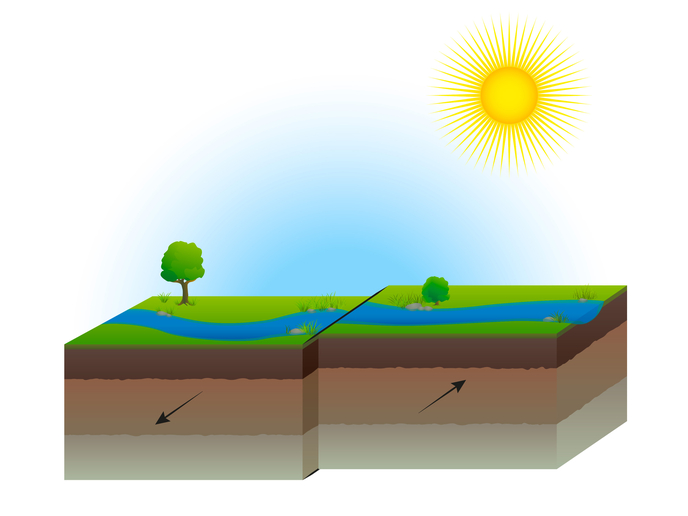Slow-motion earthquakes? Analysing silent earthquakes with machine learning algorithm
Seismologists can’t predict earthquakes, but they can calculate the likelihood of major earthquakes along a certain fault over a given period of time. Commonly known as slow-slip events, earthquakes that are similar to regular sudden ones but that take place on much longer timescales (usually from days to months) are also studied frequently by geoscientists. Understanding these seemingly mild slow-motion earthquakes helps shed light on earthquake mechanics and the physics governing their timing and magnitude. Partially supported by the EU-funded GEO-4D project, a team of scientists has revealed distinct statistical features marking the period leading to slow-slip ruptures in Earth’s crust months before tremor or global positioning system (GPS) data detect a slip in the tectonic plates. A press release by the Los Alamos National Laboratory summarises the study that was published in the journal ‘Nature Communications’. “Given the similarity between slow-slip events and classic earthquakes, these distinct signatures may help geophysicists understand the timing of the devastating faster quakes as well.”
Predictable slow-slip events
Using a machine learning model, the team examined continuous seismic waves covering the period between 2009 and 2018 with data from the Pacific Northwest Seismic Network that tracks earth movements in the Cascadia region. Lead author Claudia Hulbert from GEO-4D project coordinator École normale supérieure and the Los Alamos National Laboratory comments: “The machine learning model found that, close to the end of the slow slip cycle, a snapshot of the data is imprinted with fundamental information regarding the upcoming failure of the system.” According to Hulbert, the team’s findings “suggest that slow-slip rupture may well be predictable, and because slow slip events have a lot in common with earthquakes, slow-slip events may provide an easier way to study the fundamental physics of earth rupture.” The researchers computed several “statistical features linked to signal energy in low-amplitude signals,” according to the same press release that states: “The most important feature for predicting slow slip in the Cascadia data is seismic power, which corresponds to seismic energy, in particular frequency bands associated to slow slip events.” The study has also found that “slow slip often begins with an exponential acceleration on the fault, a force so small it eludes detection by seismic sensors.” The Los Alamos National Laboratory press release adds that the team’s supervised machine learning “algorithms are transparent, meaning the team can see which features the machine learning uses to predict when the fault would slip. It also allows the researchers to compare these features with those that were most important in laboratory experiments to estimate failure times.” Slow-slip events were first observed about two decades ago by geoscientists tracking otherwise undetectable shifts in earth by utilising GPS technology. These events occur when tectonic plates grind extremely slowly against each other, like a tremor in slow motion. A slow-slip event that occurs over several weeks might release the same amount of energy as a 1-minute-long magnitude 7.0 earthquake. However, these recurrent quakes release energy very slowly, so the deformation that they cause at the surface is on the scale of millimetres. The ongoing GEO-4D (Geodetic data assimilation: Forecasting Deformation with InSAR) project focuses on developing a tool based on machine learning procedures that combine the detection capabilities of various data, including information by the Sentinel-1 satellite mission, to build time series of ground motion. For more information, please see: GEO-4D project
Keywords
GEO-4D, earthquake, slow-slip event, machine learning, Los Alamos National Laboratory



